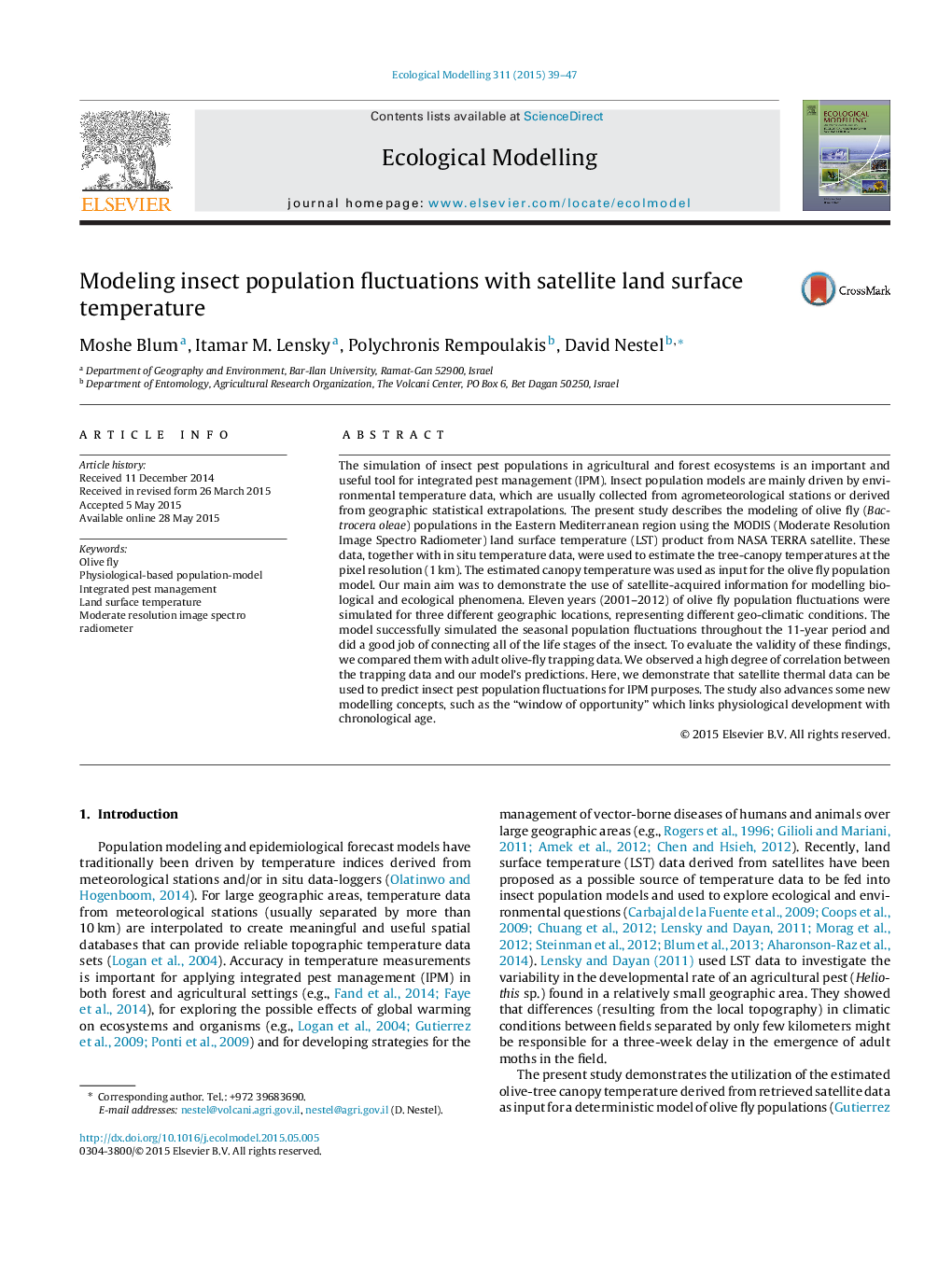| Article ID | Journal | Published Year | Pages | File Type |
|---|---|---|---|---|
| 4375635 | Ecological Modelling | 2015 | 9 Pages |
•MODIS land surface temperature (LST) was used to model the population trends of the olive fly.•Tree-canopy temperatures at 1 km resolution were derived from LST temperature-series.•Eleven years of olive fly population trends were simulated for three different locations.•The model successfully simulated the seasonal population trends.•Good results were obtained from the validation of the model conducted with olive fly trapping data.
The simulation of insect pest populations in agricultural and forest ecosystems is an important and useful tool for integrated pest management (IPM). Insect population models are mainly driven by environmental temperature data, which are usually collected from agrometeorological stations or derived from geographic statistical extrapolations. The present study describes the modeling of olive fly (Bactrocera oleae) populations in the Eastern Mediterranean region using the MODIS (Moderate Resolution Image Spectro Radiometer) land surface temperature (LST) product from NASA TERRA satellite. These data, together with in situ temperature data, were used to estimate the tree-canopy temperatures at the pixel resolution (1 km). The estimated canopy temperature was used as input for the olive fly population model. Our main aim was to demonstrate the use of satellite-acquired information for modelling biological and ecological phenomena. Eleven years (2001–2012) of olive fly population fluctuations were simulated for three different geographic locations, representing different geo-climatic conditions. The model successfully simulated the seasonal population fluctuations throughout the 11-year period and did a good job of connecting all of the life stages of the insect. To evaluate the validity of these findings, we compared them with adult olive-fly trapping data. We observed a high degree of correlation between the trapping data and our model's predictions. Here, we demonstrate that satellite thermal data can be used to predict insect pest population fluctuations for IPM purposes. The study also advances some new modelling concepts, such as the “window of opportunity” which links physiological development with chronological age.
